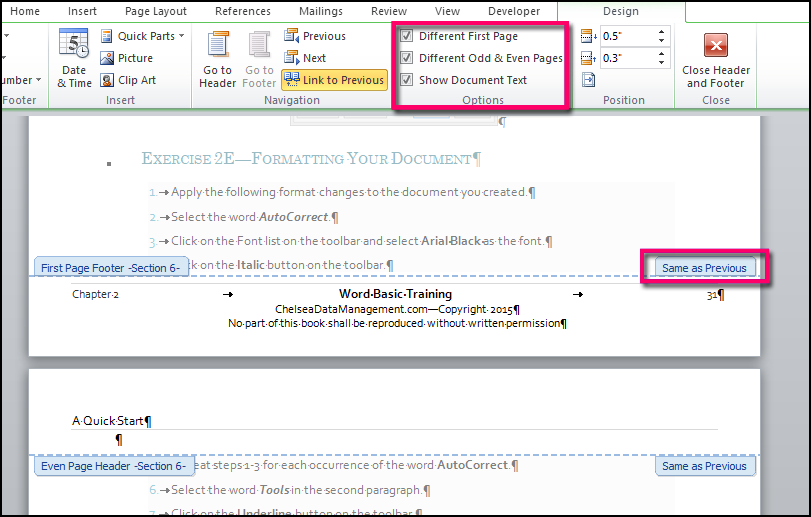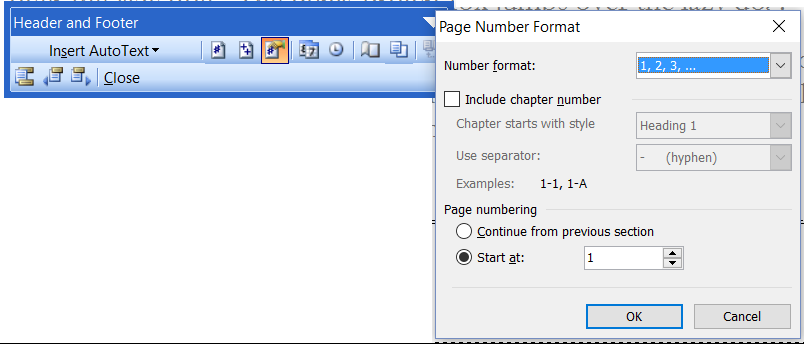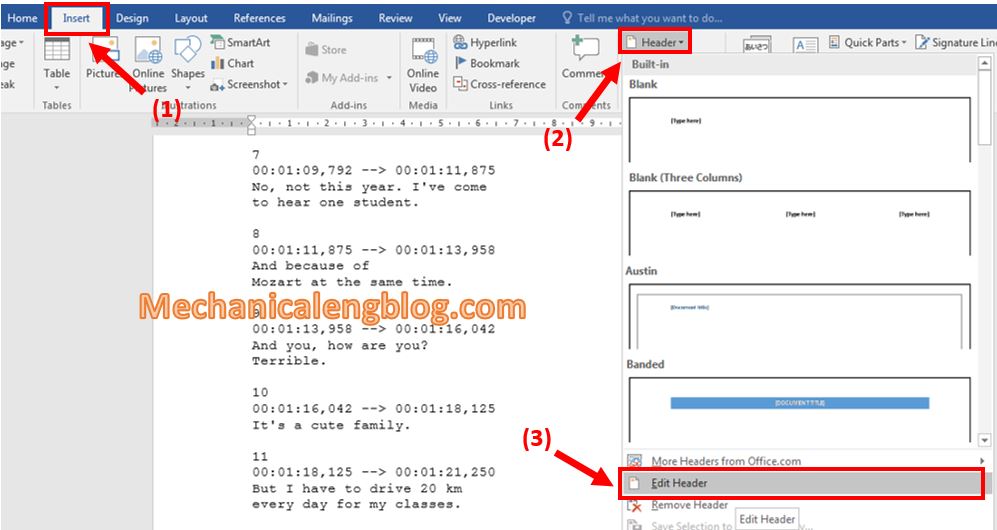

Try putting text in the header and the page number in the footer, for example, to avoid cutting off the text.

However, if there is text or a page number already in one of the fields, the original field limits apply. If the text in your header or footer is too long to fit in a field, the field adjusts to allow for the longer text. If a button is dimmed, that format can’t be applied to the selected text. To change the font, font size, color, and alignment of header and footer text, select the text, then use the controls in the Format sidebar. Left and right pages are different: When this checkbox is selected in a document using facing pages, the headers and footers on left and right pages can be different. Deselect this checkbox if you want to use different headers and footers for this section. Match previous section: Use the same headers and footers from one section to the next. If the document has more than one section, the setting applies only to the first page of this section.

Hide on first page of section: Hide the header or footer on the first page. To set header or footer behavior for each section, click the Section tab at the top of the Document sidebar, then choose any of the following: To set the distance from the top and bottom page margins, click in the toolbar, click the Document tab at the top of the sidebar, then click the arrows or enter values in the Top and Bottom fields (below the Header and Footer checkboxes). Instead, click in the toolbar and choose Page Number. Note: If you already added page numbers in another section, you don’t see the Insert Page Number pop-up menu.

Export to Word, PDF, or another file format.Change the look of chart text and labels.Add a legend, gridlines, and other markings.Change a chart from one type to another.Functions that accept conditions and wildcards as arguments.Ways to use the string operator and wildcards.String operator and wildcards in formulas.Calculate values using data in table cells.Select tables, cells, rows, and columns.Fill shapes and text boxes with color or an image.Set pagination and line and page breaks.Format hyphens, dashes, and quotation marks.Format Chinese, Japanese, or Korean text.Use a keyboard shortcut to apply a text style.Create, rename, or delete a paragraph style.Bold, italic, underline, and strikethrough.Select text and place the insertion point.View formatting symbols and layout guides.Intro to images, charts, and other objects.If you are done, simple hit the Close Header and Footer button.If you would like to now define a custom MS Word footer in the first page, hit Go To Footer and follow the steps below.It’s possible to show the numbers in your document first page only. At this point you might want to include page numbers in your doc.Your selection of file properties are also available by hitting the Document Info button. Hit the Quick Parts button for available document properties available for use in your header, such as: Author, Subject, Title, Company Name, Phone, Publish date etc’. In the Options section, check the Different First Page check box.The Header & Footer Design pane will be opened.In case that you already have a predefined header for your first page, hit Edit Header. In the upper Ribbon, hit Insert, select Header and select your Header from the selection of available Built-In headers (available either locally or at ).Browse to your relevant Word 2016 / 2019 / 365 / 2021 document.On your computer, launch Microsoft Word.Kindly go ahead and proceed as following:
#Removing header from one page in word how to
Here’s a simple tutorial to explain how to put customer headers for Microsoft Word (both Windows and macOS) then we’ll provide a similar tutorial for Google Docs documents. In summary: can i set my document header and footer and show it in the first page only? I guess my question is whether what i am asking is even possible either in my desktop Office 365 version? If not, is it a feature offered in Google Docs. In the subsequent pages, i would like to display / keep only the report (file) name information. The documents i create have a custom header in which i typically input the report name, its author, date it was written and so on. I work as a business analyst and often use Microsoft Word as well as Google Docs to author some performance tracking reports which i submit to my management chain so that they can take action. Here’s a note we got from our reader, Diana:


 0 kommentar(er)
0 kommentar(er)
